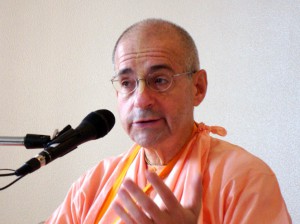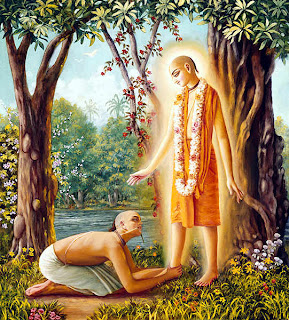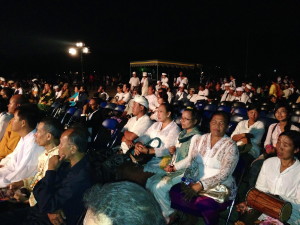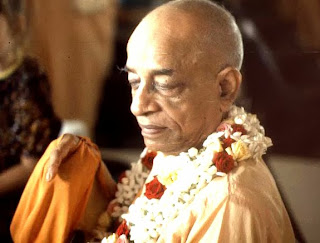TIPS ON WRITING
ISKCON New Talavan ( USA ) Farm Community (133 photos)
→ Dandavats.com
 The New Talavan farm community was begun as a project in June of 1974. At first it was just a few devotees from the New Orleans temple who came out and slowly began planting gardens. They worked as time permitted and then returned to the New Orleans temple at night, a round trip of about 130 miles. Soon some devotees began staying on the farm full time. Read more ›
The New Talavan farm community was begun as a project in June of 1974. At first it was just a few devotees from the New Orleans temple who came out and slowly began planting gardens. They worked as time permitted and then returned to the New Orleans temple at night, a round trip of about 130 miles. Soon some devotees began staying on the farm full time. Read more › Video of Parikshit dasa leading New Vrindaban’s 24 Hour Kirtan – June 15th, 2013.
→ New Vrindaban Brijabasi Spirit
Video of Parikshit dasa leading New Vrindaban’s 24 Hour Kirtan – June 15th, 2013.
The “Devil Surrenders” in the “meanest town of Macedonia”! (146 photos)
→ Dandavats.com
 It is said that Ohrid is the, ‘meanest town in Macedonia.’ Local tradition says the Devil created Ohrid. The saying goes that when someone challenged that the town is so beautiful the Devil smiled and replied, “Yes, but the people are as mean as can be!” Read more ›
It is said that Ohrid is the, ‘meanest town in Macedonia.’ Local tradition says the Devil created Ohrid. The saying goes that when someone challenged that the town is so beautiful the Devil smiled and replied, “Yes, but the people are as mean as can be!” Read more › ONE DAY ON POLISH FESTIVAL OF INDIA TOUR 2013
→ Gouranga TV - The Hare Krishna video collection
ONE DAY ON POLISH FESTIVAL OF INDIA TOUR 2013
06.18 – Be not self-conscious; be conscious of the self
→ The Spiritual Scientist
The word ‘self-conscious’ refers to an excessive awareness of one’s appearance and actions. For example, when we give our first public speech, we may be self-conscious, that is, too worried about how we look and how we speak.
Self-consciousness can be crippling. It can divert our mental energy away from concentrating on doing our actions properly to conjuring images of what others are thinking about our actions.
When we are thus self-conscious, the self that we are conscious of is a pseudo-self. It is our surface appearance that is visible to the public eye. In fact, it is not even that – it is our conception of what the world is seeing when it sees us. This conception is derived mostly from our material desires, our notions of what kind of appearance will attract us and thereby make us feel good.
Gita wisdom helps us break free from such self-consciousness by enabling us to become conscious of the self, our authentic self – the soul. The best way to become conscious of the self is by becoming conscious of the Supreme Person Krishna with whom the self is eternally related as an integral part, as a beloved child. The process of bhakti-yoga brings dynamism to our consciousness of our self by providing us multiple ways in which we can serve Krishna.
The Bhagavad-gita (06.18) urges us to give up material desires and thereby situate ourselves in consciousness of our true self. The more we live in our harmony with our spiritual identity, the less we worry about our material image because we understand that it is peripheral to our actual self. Once we start relishing the fulfillment of our true spiritual identity and glory, the need to be self-conscious and seek flickering pleasure through a positive self-image in the world disappears.
***
06.18 - When the yogi, by practice of yoga, disciplines his mental activities and becomes situated in transcendence — devoid of all material desires — he is said to be well established in yoga.
Introduction to Krishna Consciousness 7/27/2013
→ Prahladananda Swami
Make One Worthy To Chant Hare Krishna
→ Japa Group
The topmost beauty
→ KKS Blog
(Kadamba Kanana Swami, 13 September 2013, Durban, South Africa, Radhastami Lecture)
 The beauty of Srimati Radharani is the topmost beauty but it is not ordinary beauty or merely external beauty. That beauty is a reflection of her love for Krsna.
The beauty of Srimati Radharani is the topmost beauty but it is not ordinary beauty or merely external beauty. That beauty is a reflection of her love for Krsna.
In the Caitanya Caritamrta, there is a section of verses which describe how Srimati Radharani is preparing to meet Krsna and how she takes her bath. It is said that her first bath is the bath of mercy or compassion. Srimati Radharani is so compassionate that she would take any small offering of a devotee to Krsna, and how can Krsna refuse her request? So this compassion, this mercy, is her first predominant feature.
She takes her second bath in youthfulness. So, she is eternally youthful and granted a spiritual body and therefore not subjected to age or time or any such influences as we are.
Then, at noon, she takes bath again and this time it is by effulgence – effulgence and bodily luster. Then she covers that with a black sari of shyness.
So in this way, we find some descriptions about the beauty of Srimati Radharani relating to her consciousness. And basically, she has all the qualities to attract Krsna, all the qualities of pure devotional service, and that manifests also in her physical appearance simultaneously, because she is not limited like we are.
Oat Broth (Oat Water)
→ View From a New Vrindaban Ridge
I got a request via Contact Me on this blog for the recipe for oat water so here I am obliging. I am going to attempt to rebrand it as oat broth.
The basic principle is to use more water that normal and cook it longer
Currently I use old fashioned oats and about 4 times the normal recommended amount of water but you can use more. We used to cook it for an hour but I am too impatient anymore so stop after 25-30 minutes. The sign when it is cooked enough is you see the “cream” starting to come out of it and the oats have mostly lost their shape. If you add enough water it is almost like a drink you can sip instead of spoon.
I add fresh ginger and cinnamon but you add whatever you want to taste, I like it quite gingery. I usually don’t cook with salt but do lightly salt this as it seems to really bring out the flavor. A tablespoon of butter per gallon doesn’t hurt it.
I add a tablespoon or two of plain yogurt to a bowlful and sweeten to taste with honey or jam.
I make a large batch once and keep it in the refrigerator taking out a daily dose and heating it up. Sometimes I add fresh or dried fruit when reheating it.
You can do the same thing with rolled barley but it takes a little longer to cook.
It is the kind of food that when you eat it you can almost heat your cells screaming, this is so good for me and tastes good to boot.
Filed under: Health
Faith Develops in the Association of Devotees, October 5, Plano, Texas
Giriraj Swami
 Giriraj Swami read and spoke from Bhagavad-gita 9.3 at a home program in Dallas.
Giriraj Swami read and spoke from Bhagavad-gita 9.3 at a home program in Dallas.
“The faithless cannot accomplish this process of devotional service; that is the purport of this verse. Faith is created by association with devotees. Unfortunate people, even after hearing all the evidence of Vedic literature from great personalities, still have no faith in God. They are hesitant and cannot stay fixed in the devotional service of the Lord. Thus faith is a most important factor for progress in Krishna consciousness. In the Caitanya-caritamrita it is said that faith is the complete conviction that simply by serving the Supreme Lord, Sri Krishna, one can achieve all perfection. That is called real faith.” — Bhagavad-gita 9.3 purport
11 Oct 2013 – Durga Puja
→ ISKCON Desire Tree
Take up anxiety – but for Krishna not for oneself
→ The Spiritual Scientist
The pure devotee does not endeavor for anything which is against the principles of devotional service. For example, constructing a big building requires great energy, and a devotee does not take to such business if it does not benefit him by advancing his devotional service. He may construct a temple for the Lord, and for that he may take all kinds of anxiety, but he does not construct a big house for his personal relations.
"HOLY STRONGER" PERFORMED BY THE GITA BAND AT ISKCON ZAGREB FEATURING ARTIHA DASA – IVICA DUSPARA (EX-"MAJKE") AND SUZANA HORVAT (SUBHADRA DEVI DASI)
→ Gita Coaching
Mr.Rajiv Shukla, Member of Parliament, IPL Chairman, BCCI Vice President received Bhagavad Gita at ISKCON Juhu
→ Dandavats.com
 On Sunday afternoon, Mr.Rajiv Shukla, Member of Parliament, IPL Chairman, BCCI Vice President came to ISKCON Juhu for Darshan of Sri Sri Radha Rasabihariji. I talked to him that it's nice that you came to temple for darshan... Read more ›
On Sunday afternoon, Mr.Rajiv Shukla, Member of Parliament, IPL Chairman, BCCI Vice President came to ISKCON Juhu for Darshan of Sri Sri Radha Rasabihariji. I talked to him that it's nice that you came to temple for darshan... Read more › Full Consciousness: HH Bhakti Vrajendranandana Swami
→ Dandavats.com
 HH Bhakti Vrajendranandana Swami, ISKCON Malaysia President, has attained full consciousness. Semi-solid food is being recommended by doctors as Maharaja's appetite is gradually improving. His liver is functioning better than before. Speech clearer, physical strength picking up. In fact, Maharaja is so eager to speak that he is calling devotee on phone Read more ›
HH Bhakti Vrajendranandana Swami, ISKCON Malaysia President, has attained full consciousness. Semi-solid food is being recommended by doctors as Maharaja's appetite is gradually improving. His liver is functioning better than before. Speech clearer, physical strength picking up. In fact, Maharaja is so eager to speak that he is calling devotee on phone Read more › Devotees Asked to Give Invocation at the County Commissioners Meeting
→ Dandavats.com
 Vegavati devi dasi, from Iskcon Alachua, gave the Invocation at the County Commissioners Meeting. She read from the Bhagavad-gita where Krishna speaks of the particular responsibilities of leaders Read more ›
Vegavati devi dasi, from Iskcon Alachua, gave the Invocation at the County Commissioners Meeting. She read from the Bhagavad-gita where Krishna speaks of the particular responsibilities of leaders Read more › October 8th, 2013 – Darshan
→ Mayapur.com
The post October 8th, 2013 – Darshan appeared first on Mayapur.com.
Water Shortage in New Vrindaban Solved
→ New Vrindaban Brijabasi Spirit
Krsna is in control. Many of our guests will remember the summer of 2012, when there were big electric storms in the New Vrindaban area, notably on the July 4 long weekend, and the electricity went down for a long time. We were helpless to make things work more quickly. There was also a severe water shortage at this time in the Dhama, with drying wells and a damaged main water tank. Many of our donors and pilgrims generously came to the aid of New Vrindaban by helping us repair the essential main water tank, and we send thanks to everyone for that. We learned that Krsna, through His devoted well-wishers, has saved us, as He always does, from a similar fiasco re-occurring!
After much uncertainty, the final appearance of the public water line on the ridge allowed New Vrindaban to hook up the Palace of Gold to the local city water system. Our main water tank (which is fed by our wells) also has city water hooked up as a back-up system. A new well has been drilled, which increases our own water production. The final approval to connect the new well from the government is currently on its way.
Gopisha das, the director of renovations and maintenance at New Vrindaban tells us, “The main water line from the city terminates behind our temple apartment building #1. Should we ever have the need in the future, we are already set up to switch the entire temple complex over to city water, but will remain on our own wells for now..”
Gopisha das confirms, with relief, “With the repair and lining of the 90 thousand gallon main tank, the newly drilled well and the addition of city water as a back-up to our own system, we can hopefully put our festival water shortage days behind us. Lord Krsna is very kind to His devotees.”
Sewa Day in the Manor (act of kindness without expectation of reward) (29 photos)
→ Dandavats.com
 Sewa is a universal concept, which involves performing an act of kindness without expectation of reward. It is performed selflessly and without ulterior motive.
As a concept, Sewa in embedded in Indian traditions, and is actively promoted by different cultures and faiths - as the core belief is the same - to sacrifice your time and resources for the benefit of others without wanting anything in return. Read more ›
Sewa is a universal concept, which involves performing an act of kindness without expectation of reward. It is performed selflessly and without ulterior motive.
As a concept, Sewa in embedded in Indian traditions, and is actively promoted by different cultures and faiths - as the core belief is the same - to sacrifice your time and resources for the benefit of others without wanting anything in return. Read more › Vivaha-yajna, marriage ceremony in Russia (245 photos)
→ Dandavats.com
 There are many purificatory processes for advancing a human being to spiritual life. The marriage ceremony, for example, is considered to be one of these sacrifices. It is called vivaha-yajna. . . . The Lord says here that any sacrifice that is meant for human welfare should never be given up. Vivaha-yajna, the marriage ceremony, is meant to regulate the human mind so that it may become peaceful for spiritual advancement. (Bg. 18.5, purport) Read more ›
There are many purificatory processes for advancing a human being to spiritual life. The marriage ceremony, for example, is considered to be one of these sacrifices. It is called vivaha-yajna. . . . The Lord says here that any sacrifice that is meant for human welfare should never be given up. Vivaha-yajna, the marriage ceremony, is meant to regulate the human mind so that it may become peaceful for spiritual advancement. (Bg. 18.5, purport) Read more › Motherly Love
→ Tattva - See inside out
That, however, doesn’t tell you the full story; the quality of the job is what really stands out. The service of a mother is incredibly selfless and unceasing. They don’t stipulate any expectation in return for their services, and are delighted when offered the opportunity to go beyond the call of duty. What to speak of receiving benefits, even when children act in irrational and ungrateful ways, the mother happily continues to serve. Their service unfailingly continues day after day, and even when the child becomes a grown adult the outpouring of motherly love doesn’t subside.
Ancient scriptures explain how our actions towards God and all living beings should be completely devoid of selfish intent. By offering our lives in service, unmotivated and uninterrupted, we experience profound satisfaction and fulfillment which otherwise remains elusive. While this may be hard to conceptualise, the living example of magnanimous mothers gives us an insight into what selflessness really is. Swami Prabhupada explained how the love between mother and child is the purest form of love found in this world. How wonderful if we could take some moments to remember this, foster a mood of gratitude, and share that selfless spirit with the entire world.
Disclaimer: I am sure many fathers also fit the above descriptions :)
The month of Damodara
→ Mayapur.com
On behalf of the ISKCON Congregational Development Ministry, I would like to share with you the new video we made about the Kartika Month and the Importance of the Damodara Program. It was filmed here in Mayapur and we have some members of our youth participating in the video. Here is the link: http://www.youtube.com/watch?v=knTzt3_ZVY4 We hope […]
The post The month of Damodara appeared first on Mayapur.com.
Mangal Artik – ISKCON MAYAPUR – Chandrodaya Mandir
→ Gouranga TV - The Hare Krishna video collection
Mangal Artik – ISKCON MAYAPUR – Chandrodaya Mandir
Vyasa-puja in South Africa, via Skype, October 5, Dallas
Giriraj Swami
 “We have no idea what we are dealing with. We are dealing with pure nectar. We have to drink that nectar. Sometimes even by force. Because of the disease of jaundice — ignorance — nectar tastes like poison in the beginning. But really appreciate the facility you have and take advantage of it. Somehow use every moment you have in Krishna’s service, with your mental functions, your words, your body. Stay always engaged in Krishna’s service.”
“We have no idea what we are dealing with. We are dealing with pure nectar. We have to drink that nectar. Sometimes even by force. Because of the disease of jaundice — ignorance — nectar tastes like poison in the beginning. But really appreciate the facility you have and take advantage of it. Somehow use every moment you have in Krishna’s service, with your mental functions, your words, your body. Stay always engaged in Krishna’s service.”
Damodar Masa 2013
→ The Hare Krishna Movement
Fearless Supersoul of the Fearful Soul
→ The Enquirer
I was able to appreciate something very, very beautiful in Śrīla Viśvanātha Cakravartī Ṭhākur’s commentary on Śrīmad Bhāgavatam 2.7.47. The verse goes:
Nārada: What do they realize when they surmount the insurmountable mysteries?
Brahmā: Some realize Paramātma – the “Supersoul.”
Nārada: What do they realize as the nature of Paramātma?
Brahmā: He is eternally extremely placid, fearless, and the substance of all cognizance. He is uncontaminated by and absolutely equal towards all causes and effects.
He is eternally extremely placid, because he is in full cognizance of his complete independence from anything fearsome. The term “substance of all-cognizance” is also very facinating, because the Supersoul represents the cit-śakti – the energy of cognizance. But the thing I thought was very, very beautiful was Viśvanātha Ṭhākur’s comment “The fearless Supersoul presides over the fearful soul.”
I found this to be stunning. I am a fearful soul because, in ignorance I think myself dependant upon dangerous, doubtful and fearsome circumstances. But a being is presiding over me, directing and helping me – who is fearless. This is a very beautiful message.
Sunday, October 6th, 2013
→ The Walking Monk
Brampton, Ontario
Saturday night overlapped into Sunday morning if you were present at Nuit Blanche held at Queens Park in Toronto. Nuit Blanche is an all night outdoor setting of eye popping sensation grabbing hands on art displays.
Our group of chanters found our chosen spot on the grass where we plopped ourselves on to carpets for our own version of art through sound. Once we kick started with Dhira leading the chant, people out there started to get on fire so to speak. It’s like the magic at New Years Eve. People are in a party mood, a little tipsy from a substance, out to impress; above all, trying to reflect the nature of the soul seeking happiness.
The dancing began under the moonlight which was over the clouds that were threatening to burst. The fun went on. The crowds eventually thinned out and our group moved on, except for me, who decided to walk it back to the ashram, mainly to bring 15 year old Aravind, one of our drummers, to his hotel. The rains came. Once again, I’m grateful to have had the Irish trekking experience, a water experience. It made me resilient to downpours. My arrival time at the ashram was 4 AM, the time to normally get up for sadhana, spiritual work out. I went to sleep.
It was a long birthday.
Up I got and in time for a ride to Brampton and a talk to the community there from a verse out of the Gita, 3.20:
“Just for the sake of educating the people in general, you should perform your work.”
I find that supremely interesting. What Krishna appears to be saying is that merely by doing your dharma, duty, you inspire others. It’s all quite subtle, simply doing as we’re obliged sets the right tone for others.
I gave a second talk in Toronto and spoke about the varying energies or emissions of the Divine. People like to hear about the internal energies and how they are full of life. The external energies, although giving a buzz initially, always end in a sad scenario. So take your pick on the choice of influence and hopefully you will be smart.
5 KM
10.10 – Might my own thing not be my own thing?
→ The Spiritual Scientist
Many people reject discipline: “I want to be free to do my own thing.”
Our aspiration to be free is natural and laudable. But we need to consider: is my own thing actually my own thing?
What we call ‘my own thing’ usually comes not from us, but from the world. The current materialistic culture parades before us an array of fashions – hairstyles, dress-styles and lifestyles, for example. Some of these catch our fancy, and we anoint them as ‘my own thing’. Over time their charm fades and we transfer the title ‘my own thing’ to some other things from society’s unending gallery of glamor. Thus the purported freedom to do ‘my own thing’ ends up as slavish capitulation to the culture’s dictation.
All of us are unique – spiritually and materially. Spiritually, we are all distinct parts of the all-attractive Supreme Being Krishna. And materially we all have distinctive blends of attitudes and aptitudes that make us who we are. If we distance ourselves from the culture’s infatuating propaganda, we get the reprieve to observe ourselves.
When we complement our own introspection with disciplined devotional service to Krishna, he gives us special intelligence, as the Bhagavad-gita (10.10) indicates. This intelligence illumines our inner terrain and helps us understand that the devotional fulfillment we occasionally relish is a precursor of the everlasting fulfillment that awaits us ahead. This devotional service and the concomitant happiness is our eternal ‘my own thing’.
Additionally, the Krishna-given intelligence also illumines our particular psychophysical nature, revealing the specific talents and temperaments that comprise our material ‘my own thing.’ This enables us to better harmonize our material ambitions with our material nature – and thereby achieve more and contribute better.
Thus does the scriptural discipline of devotional service free us to do ‘my own thing’.
***
10.10 - To those who are constantly devoted to serving Me with love, I give the understanding by which they can come to Me.
Echoes of Peace
→ Ramai Swami
Echoes of Peace is a festival that has been held for eleven years in one of the main parks of Denpasar. Each year, leaders from spiritual groups in Bali come together and show cooperation under the banner of the Hindu Parishad. One of the guests of honour was the Vice Governor of Bali, who gave the keynote speech.
No ordinary beauty
→ KKS Blog
(Kadamba Kanana Swami, 13 September 2013, Durban, South Africa, Radhastami)
 In Vrndavan, in one of the forests which is known as Kamyavana, there is place called Mohini-kund. Once in this place, a particular pastime took place. Srimati Radharani mentioned that she had heard many Bhagavatam lectures speaking about the super-excellent beauty of Mohini-murti, that particular form of a female that Krsna took, and the Bhagavatam recitals had explained that the Supreme Lord takes the female form and this female form is the ultimate end of beauty.
In Vrndavan, in one of the forests which is known as Kamyavana, there is place called Mohini-kund. Once in this place, a particular pastime took place. Srimati Radharani mentioned that she had heard many Bhagavatam lectures speaking about the super-excellent beauty of Mohini-murti, that particular form of a female that Krsna took, and the Bhagavatam recitals had explained that the Supreme Lord takes the female form and this female form is the ultimate end of beauty.
So Srimati Radharani said, “So, I would like to see the form of Mohini-murti to see who is more beautiful, she or me?”
So Krsna said, “No, no, no. That really is no comparison, no comparison to Mohini-murti. Don’t worry.”
But anyway, all the gopis became excited by the idea so Krsna showed his form of Mohini-murti. He stood next to Radharani and at that time, Krsna as Mohini-murti, looked just like a shadow in comparison to the effulgence of Srimati Radharani. That beauty of Srimati Radharani is the topmost beauty but it is by no means ordinary beauty or merely external beauty. That beauty is a reflection of her love for Krsna.
Slow Down And Be Patient
→ Japa Group
From Japa Transformation
by Satsvarupa dasa Goswami
Kalachandji’s Sunday School
→ TKG Academy
Kalachandji’s Sunday school has been active since 2007. We have 30-40 children attending Sunday school regularly now. We have two Sunday school sessions. Each session includes 20 Sunday classes, one field trip, one festival, and two performances at the temple.
Our Sunday school group is divided into 4 classes.
- Gopal Class: Age 3-5,
- Damodar class: Age 6-8,
- Madhava: class Age 9-11, and
- Govinda class: Age 12-15.After students reach 15 years of age, we encourage children to participate in organizing presentations and seminars on spiritual topics. Pursuing the Bhakti Sastri course is also an option.
We are developing planned curriculum for all the classes. The curriculum will include all the stories, songs, verses, drama, and activities children will learn in these classes for 3 years.
Our Gopal class studied Lord Krishna’s Pastimes, Dasavatar, and little stories from Srimad Bhagavatam. They learn to sing Krishna Conscious songs. They make arts and crafts based on the story. They also participate in creating dramatic performances. During performance, this group of children will sing Nrsimha prayer.
Our Damodar studied Vaisnava Saints, Ramayan, stories from Srimad Bhagavatam. They also learn 3 verses every semester, so our Damodar book includes 18 verses from Bhagavad Gita. They also learn vaisnava bhajans, drama and perform arts and crafts based on stories they are learning. During performance they will sing Tulasi Arati and Vaisanava Bhajans.
Our Madhava class learns about Vaisanava Saints and Bhagavad Gita in detail. They learn verses from Bhagavad Gita, discuss them, make a presentation on them or perform an art on them, or perform a little skit on them or debate. This class also focuses on learning Vaisanava Bhajans. During performance they will sing Gaura Arati and Vaisanava Bhajans at the temple.
Our Govinda class is more discussion class where they can bring in their questions and we discuss and answer them together from our scriptures. They also learn Srimad Hhagavatam, Bhagavad Gita, learn about different Sanyasis, and Srila Prabhupada. They have practical classes like cooking, Arati performance, deity worship, woodworking, jewelry making, sewing, etc. During performance they will perform Tulasi Arati and help the Pujari clean up after Gaura Arati.
If you would like to volunteer or if you have any questions, feel free to write to rasakelirns@yahoo.com or call 972-618-8280.
HG Dwaraka and Chitra Iyengar
→ TKG Academy
This month, we would like to recognize His Grace Dwaraka Prabhu and Her Grace Chitra Mataji as our Donor Spotlight.
If you come to the temple every Sunday, you will see Chitra Mataji’s smiling face greet you at the visitor’s desk. With blessings of Sri Sri Radha Kalachandji’s devotees, Dwaraka enjoys approaching new guests to welcome them to the family of Kalachandji Dham.
Dwarka and Chitra Iyengar have been serving with ISKCON since 1977. They have been Vaishnavas their entire lives, belonging to the Sri Sampradaya, beginning with Laxmi-devi and in the disciplic line of Sri Ramanujacarya. You will see their dedication to bhakti when you visit their home. 12 effulgent Shalagram Shilas reside there. Their daily sadhana, consisting of Hare Krishna japa, prayers, abhishek, and mantra meditation lasts for 3 hours each morning!
They have been attending and practicing at Radha Kalachandji Dham since Rasikendra Prabhu introduced them in 1995. They have performed a variety of vital services. They have performed a variety of vital services including providing administrative guidance to the congregation.
Dwarka Prabhu and Chitra dearly love the community of devotees and specifically, the dedication that the devotees show to Sri Sri Radha Kalachandji. This is shown in their loving interactions and care for every member who comes to visit Sri Sri Radha Kalachandji. Indeed, they imbibe the main principal behind Krishna Consciousness: gopi-bhartuh pada-kamalayor dasa-dasanudasa. Serving the dear servants of the Supreme Lord is their meditation.
“Why do you support TKG Academy?” When asked this question, Dwaraka Prabhu answered immediately. ”It’s simple. Because this was the first Gurukula established by Srila Prabhupada. He wanted to make the Gurukula grow.
With their monthly donations, their blessings, and their continuous support in assisting other members, they are making Srila Prabhupada’s vision come to fruition.
Our Growing Bodies
→ TKG Academy
Aww, look at those cute babies! Wait, not the students, their pictures.
These are some of this year’s Kinder and 1st grade students.
Definitely not babies anymore, are they?
This lesson, “All About Me,” fits into multiple categories including science and writing.
Among the skills we are learning is to distinguish differences due to our bodies’ growth: our size, looks, preferences, abilities and activities.
HH Gunagrahi Das Goswami & HH Giriraj Swami / Qualities of a Devotee
→ Kalachandji's Audio Archive
HG Prema Charu Prabhu / SB 10.47.69
→ Kalachandji's Audio Archive
Don’t be disturbed by the nature of human society
→ The Spiritual Scientist
Sometimes one is praised and sometimes one is defamed; that is the nature of human society. But a devotee is always transcendental to artificial fame and infamy, distress or happiness.














